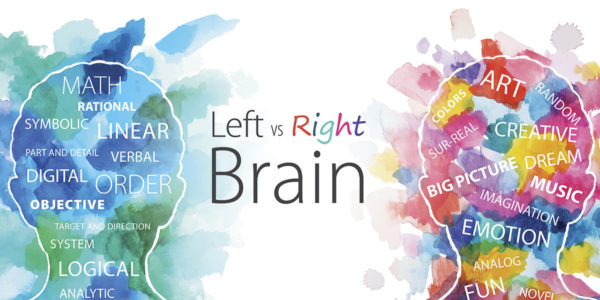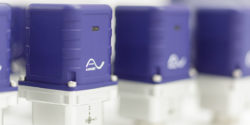Second in a Series on Brand Building
In Part 1 of Branding 101, I offered an overview of what a brand is and why branding matters. In that article, I explained why the concept of “brand” itself goes far beyond a logo, how a brand is created, and the artistry that is required to make a brand famous while also conveying and communicating brand promise.
Therefore, in this piece, I’m going to dig a bit deeper into the details of what makes a brand, and break down the individual design components, imagery, colors, messaging, and other key decisions and choices that enable a brand to be recognizable and remembered. Additionally, I will also tell you a little about my own creative process and how Sagon-Phior helps our clients.
What is Brand Identity?
The simple answer here? Brand identity is the brand’s face—it is a visual representation. It is all of the details, really, and includes logos, typography, colors, messaging, packaging, and more. Brand identity is complementary and reinforces the reputation of the brand.
When done well, it attracts new customers into the fold and makes existing supporters feel comfortable and content. It is both outward facing as well as inward facing.
But there is a very important rule related to brand identity; namely, it must be consistent and clear—and no matter where the brand’s identity is displayed it absolutely must be quickly recognizable. In this regard, a brand management system can be truly valuable and encompass multiple resources, including a brand style guide, explanation of brand standards, philosophies, and expectations, messaging, employee training, design application, and dedicated software, just to name a few.
What Goes into Brand Identity Design?
From a general perspective, formulating a brand identity involves discovery, research, brainstorming, design, and refinement. It is a comprehensive and exploratory process that relies on radical detail—it is by no means a quick and easy process, at least not when it’s done right.
Brand identity design, frankly, is something that I truly enjoy. We have done it for many clients, and it is satisfying when ideation and theoretical musings end up creating something truly one-of-a-kind and appealing.
Here is essentially a breakdown of what is involved when engaged in brand identity design:
- The discovery process: This is where I will work one-on-one with the client, gather understanding of their business, the problems they may be experiencing as well as their goals.
- Let the research commence: After speaking with the client, we begin researching the industry, the competitive landscape, and the business’s history. From here, we look to define the new brand strategy, outline positioning, develop messaging, and establish the voice.
- Time to get creative: This is one of most fun parts. Creative juices start flowing and here is where logos are developed, typography is analyzed, and color palettes are considered—just to name a few items on the typical to-do list.
- Revise and refine: As I noted, this is not a “one and done” process per se. The approach is rather that of rinse and repeat until a shortlist of client preferences are formed.
But also keep in mind that while I have offered a neat list of bullet points, this isn’t a linear process. There is overlap in each stage and oftentimes there will be much movement forwards as well as backwards until the work is totally finished. It’s like polishing a rare gemstone to perfection.
Breaking Down Individual Brand Identity Elements
There are a lot of moving parts here, of course, but I’m going to touch upon the primary elements associated with brand identity.
- Logo: As I said in Part 1 of this series, your brand is not your logo, but it is part of your overall identity. Logo design must be gotten right from the outset because it is often at the center of the whole brand strategy. I like to say that when done right, a powerful logo is able to turn your prose into visual poetry. The logo must be relevant to the ideas, activities, and values the brand represents, it must be memorable and different in order to achieve an emotional response from the targeted audience. Plus, a logo must be flexible enough that it will translate from a tiny social media digital icon to that of a huge print billboard or physical building—as well as everything else in between. Today, we are designing logos that can be easily animated since so many uses include video and digital formats.
- Color: Related to logo design is the color palette, which should also be simple. It’s typically recommended that only one to three primary colors be used; however, it is also important to reference color theory here. Color is remarkable in that it causes biological and physiological reactions in all living things, it effects emotions and tells a subtle, yet powerful story. For instance, blue expresses calm, security, and order while red expresses passion, warmth, and energy. In the brand identity design process—and during the research phase—we research competitors on behalf of our client to ensure that there is no color palette duplication. Additionally, it is also important to understand what colors mean to different cultures and groups of people. We just completed an assignment for the United Nations wherein the logo, new palette, fonts, and brand guidelines had to translate across 138 countries. For the Star Wars brand, the palette I selected was based on primary color and that is why it had such wide appeal and still holds up today. In all honesty, I could write endlessly on the role of color in brand identity design, it’s an incredibly complex topic and uniquely fascinating.
- Typography: Selecting a font is also a key step. Fonts are powerful and must work in harmony with your logo and colors. There are fonts that are easier and faster to read than others, and fonts that appeal to different generations of people. Fonts can deliver a humble, bold, feminine, masculine, traditional, or modern brand feel, and much more. Choosing a single primary typeface leads the brand design process, and whatever is decided upon should work universally. I am not a fan of making others have to download a special font or use a replacement font because the selected brand font will not work in PowerPoint, or another platform. And while it may feel tempting, I don’t recommend mixing more than two fonts, maybe three at most, as it can visually dilute the brand. Again, there are so many best practices here—I’m tempted to write a separate article on this topic completely!
- Messaging: Here is where language comes into play. Part of the brand identity process is outlining what the brand is, and what it isn’t. For instance, for Nevada State Bank, a past client of ours, it was established, “Our tone should be optimistic, enthusiastic, and accessible. It should be authentic, clear, and concise. Straight-forward, positive, and solution-oriented. It should not be confusing or convoluted. It must not overpromise. It should never be ‘puffery,’ it must always be authentic.”
- Graphics: This includes on-brand supporting graphics, design assets, icons, and photographs. Let’s use the Nevada State Bank example again. “Nevada State Bank is an optimistic, empowering brand. It is an advocate and champion for its customers and for the state of Nevada. It is dedicated to making a difference in the lives of those it touches. All images used should support these traits/principles. Taking that into account, the imagery associated with the brand is upbeat, confident, bright, inviting, encouraging, in-the-moment, and down-to-earth. Images should appear caught-in-the-moment, realistic, and unposed.”
Creating a Brand Style Guide & Living by It
All of these components, once they are established, refined, and finalized, will then be implemented into a brand style guide, which is essentially a “Brand Bible” of sorts that serves as a guide and instruction manual on the visual representation of the brand.
A brand style guide defines all brand elements and their application. It dictates how copy should be written, how a logo should be used, what constitutes best practices, what to avoid, and more. The style guide communicates the brand history, values, vision, personality, and manifesto. It is an all-encompassing form of reference material that should be used across the organization and updated accordingly as times change and the brand evolves.
Ultimately, the style guide is standard setting and allows a brand to stay focused, recognizable, and consistent. It is the output of the brand identity design process and sets the stage for the future direction of marketing and advertising endeavors. We usually recommend that the brand guide be digital and published on a password-protected website, so that if an organization has many offices or geographies, it’s easy to access. Plus, if you have to update a trademark, legal line, design, etc., you simply upload the change or file and make it downloadable from the site, instead of having to send files or provide users with a separate link.
At the end of the day, a lot of hard work goes into the creative process of branding a company. However, that is just the beginning because after the brand identity design is completed, the real work starts. It’s at that point that all of your brand design elements will exist in the real world.
And that’s where they are used to either increase your brand value—or the opposite.
Interested in talking more about this subject? I’d love to. Connect with me and let’s chat.
Sagon-Phior has successfully applied this unique practice to many national and global brands in technology, healthcare, banking, lifestyle and non-profit categories. For more information, go to Sagon-Phior.com









